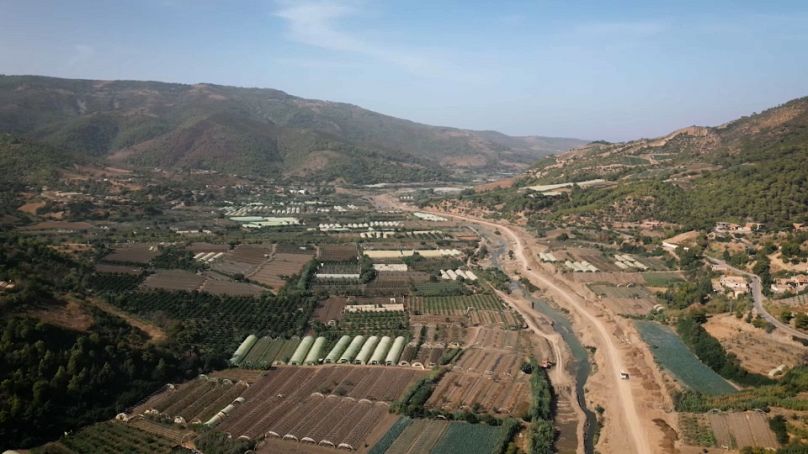Water management is a major challenge for Algeria, as both the need for drinking water, and the consistent spells of drought, make the process a race against time. To confront this challenge, the country relies on its desalination plants and its dams.
In the region of Tipaza, Kef Eddir is one of the 81 large dams in Algeria, where four new dams bring the storage capacity to 9 billion cubic meters. Dozens of other similar projects are planned in the country, which has just experienced three of the driest summers in its history.
“The interannual storage of water will of course enable us, first of all, to meet the population’s drinking water supply needs. But also the development of agriculture, and in turn food security. We also have the use of water for industrial purposes,” says Nadia Ouchar, central director of the National Agency for Dams and Transfers (ANBT).
This dam has a strategic role in supplying three wilayahs (regions) with drinking water – Tipaza and its neighbouring wilayahs of Ain Defla and Chlef.
“Interconnectivity is important for regional balance, for equity in the supply of drinking water to the population, and of course for solidarity between the different regions,” Ouchar adds.
The dam’s reserve lake hopes to soon supply the greater Algiers area – some 150 kilometres away. The first stage of the water supply work consists of large pipes, pumping stations and reservoirs that stretch over dozens of kilometres towards the region’s capital, Tipaza. Upon completion, about half a million people will benefit from this regional project.
Digging underground
There are no dams in the very arid south of the country. But the Sahara has some of the largest underground reserves in the world. The inhabitants of Tamanrasset, the big city in the Hoggar region, rely on the waters drilled under the sand of the neighbouring wilayah, and are transferred 700km journey across the desert.
“Tamanrasset is supplied by the town of In Salah through the use of 24 boreholes. We have six pumping stations that lead to the terminal reservoir,” says Mohamed Belouafi, head of the Tamanrasset Water Resources Department. “For the moment, the supply is only to the main town of the wilayah. But we have plans to supply other cities.”
Desalination
Again concerning the coastal regions, priority is given to seawater desalination plants. The plants already provide 17% of the country’s drinking water, a figure that is expected to reach 60% by 2030, thanks to new stations.
The Bateau Cassé plant, in the Algiers district of the same name, was put into service in record time. “The work began in October last year and we delivered this plant and started producing in March 2022, at full capacity, (that’s) 10,000 m3 per day. Given the water stress, we gave it our all to get it up and running as quickly as possible,” says Sami Ghezala, the project manager at the Algerian Energy Company (AEC).
He adds, “This station produces the equivalent of 10 million litres per day. If we consider that a citizen consumes 100 litres per day, it can cover the needs of 100,000 inhabitants.”
The water is drawn 1 kilometre from the coast. It then undergoes several purification processes, including – the more energy efficient – reverse osmosis, before being mineralised. This technology could be deployed all along the Algerian coast.
All in all, Algeria’s ingenuity and innovation secure the country’s water supply for the future.
Source : https://www.euronews.com/2022/10/31/the-challenges-and-successes-of-algerias-water-supply-industry








